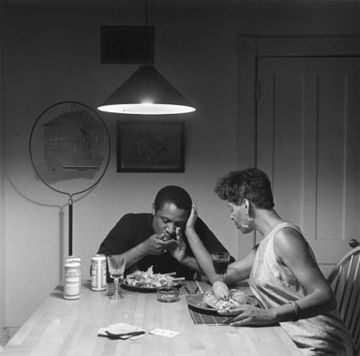If you follow the Art21 blog and work with Art21 materials you know full well there are plenty of opportunities to see and share a huge variety of video about contemporary art and artists. Add New York Close Up to the lineup, which kicked off Monday, and it just keeps getting better. But this week I want to take a moment to highlight the blog’s video exclusives and an idea for grouping videos like these.
At two different professional development workshops this month, one at the Jacob Burns Film Center in New York and another at the Holland Area Arts Council in Michigan, I had the opportunity to teach with Art21’s video exclusives. For both workshop activities I grouped three videos that simultaneously addressed themes of peace, war and power in order to give participants a look at multiple perspectives on these subjects. I asked teachers and artists in the audience to consider how exposing students to these three videos together may open up the definitions of war, peace and power in order to give them diverse starting points vs. going with knee-jerk reactions to familiar (but often under-explored) topics. Let’s face it, if you simply ask a bunch of secondary teenagers to create art about war, don’t be surprised to see a lot of guns, blood, and maybe a few planes. Using the three videos in this particular example allowed me to more broadly define very different kinds of war, peace and power that exist in our world, and even in our homes.
When you compare An-My Lê’s video featuring “29 Palms” with Krzysztof Wodiczko’s interview discussing the meaning of peace, and then view Carrie Mae Weems’ “The Kitchen Table Series”, a broad picture gets painted with these themes. An-My Lê discusses the beauty of war and Krzysztof Wodiczko asserts that working towards peace “cannot be peaceful”. Carrie Mae Weems illustrates through her photographs and commentary that even our own kitchens are the stage for very different kinds of war and power struggles.
But what are the similarities between what each artist is saying? What are the main differences? And are there other videos you would pair or group in order to teach about particular themes, questions or ideas?
Utilizing Art21’s video exclusives allow us to compare artists in the series taking on questions and topics that are perhaps not highlighted in the original broadcasts. With the aid of concise descriptions that accompany each exclusive, educators can quickly read about any number of videos and then view selected exclusives that have potential to inspire students far beyond static “image searches” or, God help us, sifting through piles of old magazines. Give it a try!





Pingback: Teaching with Contemporary Art Turns Four | Art21 Magazine